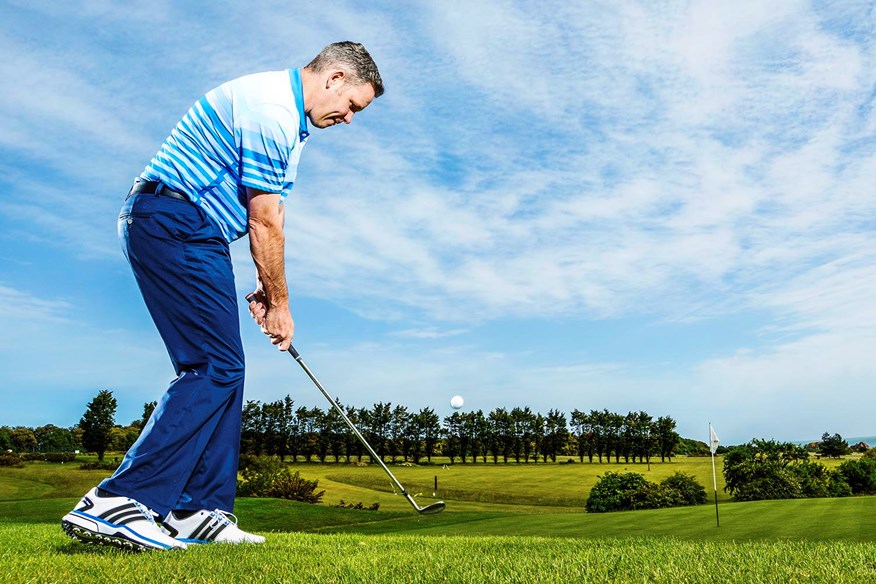Make practice more fun
Published:
Footballers can practise on the pitch, and snooker players on the table. But when we golfers want to practise, we are forced off our playing arena to a wide expanse of nothing that bears little relevance to the challenges of the game.
But it doesn’t have to be this way! You can work on your game in the arena where you play – on the course itself. Not only does it sharpen your playing skills, it’s also a lot more fun – and that’s why you should make on-course practice part of your best year of golf in 2017 (as long as you don’t hold up play). Here are five ways you can do just that. On each one, record your personal best – and try to beat it next time.
1 Two-ball nasty (SIX or NINE holes)
This dastardly twist on a Texas Scramble asks you to hit two balls each time… and always play the worst one. In other words hit two drives, select the lesser of the two and then hit two approaches from there… again discarding the better one.
What you’ll learn: This game asks you to hit a higher percentage of harder shots, helping you build resilience. It tunes your ability to recover, while hardening you to pressure – with one good drive in play, you’ll feel nervous over the second. Ultimately though it makes the regular game, with one ball, feel a whole lot easier.
2 Five-club draw (NINE or 18 holes)
Pull nine clubs from your bag and head to the first tee with just five. You can choose which, but something like 3-wood, 4-iron, 7-iron, wedge and putter works well. Play nine or 18, seeing how well you can score with a limited arsenal.
What you’ll learn: This game forces you to get creative. You’ll be faced with trying to squeeze an extra 15 yards out of your 7-iron, or playing a tough bunker shot with a wedge. Play it regularly and you’ll develop a feeling for how to knock the ball down, cut it up or even hit a hard draw to gain yards – all useful shots to have in your locker over 18 holes.
3 Get scrambling (NINE holes)
Check there are no groups behind you. Play the hole normally, then afterwards gather four balls and throw them off the green into four different locations. Try to include sand, thick rough, tight fringes and slopes. Take each ball in turn, selecting the club, planning the shot, and working hard to get it up-and-down.
What you’ll learn: This game taps directly into your ability to score. You’ll sharpen your ability to play all the short game shots and improve your club selection, while also identifying areas where you are weak. You’ll also get to know the course better – a real advantage when you’re faced with the same shot in a competition.
4 Drag back (18 holes)
Play the hole normally. Strike your first putt. Wherever the ball ends, you must pull it a putter’s length further from the hole and play your second putt from there. In other words, come up a foot short and you must use your putter to make it a four-footer or so. Miss that and you must pull it back again.
What you’ll learn: This game removes gimmes and tap-ins, meaning that on every green you are forced to hole a decent putt to make your score. Over time this hardens you to the task of holing out, making you a stronger short-putter in the heat of battle. It also makes you focus harder on your touch from range – you’ll have to get it pretty close to avoid a three-jab.
5 7-iron tee shot (NINE or 18 holes)
On every par 4 and par 5, tee off with your 7-iron. Then play the hole normally. As with the other games listed here, keep track of your score to check how much these shorter tee-shots impact your total.
What you’ll learn: Stats suggest the big killer for the scorecard is errant drives – lost balls and OB. Teeing off with a 7-iron should rule that out, giving you a better perspective on the virtues of keeping the ball in play and improving course management. It also means longer approach shots, making your practice harder than the real thing.

It’s worked for Alex Noren!
Alex Noren’s amazing recent form has coincided with a commitment to spend less time on the range and more on the course. He’s even joined a new club – Ullna, near Stockholm – specifically as it doesn’t have a range. “I play a lot more golf on the course than before and try to achieve scores even when my game doesn’t feel so good,” he says. “Before, if I played nine holes and if I didn’t feel so good, I went to the range. Now I use the course as my driving range, hitting extra balls here, extra balls there.”


